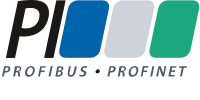Robots are a integral part of digital factories
Stationary robots are increasingly being integrated as complete systems in modern production lines in order to increase the degree of automation and reduce costs. Those envisioning the large robot lines in the automotive industry are not entirely wrong, but adoption is occuring in many other industries as well. Even medium-sized companies, whether in the food & beverage industry, the packaging industry, or even electronics suppliers, are turning to robot-based solutions. As these robots become smaller, less expensive and easier to handle, they are set to become an integral part of digital factories. At the same time, the number of applications is constantly increasing and even companies in emerging markets are integrating more and more robots.
There is no end in sight to the boom.
When it comes to practical implementation, there are still some challenges to overcome. It is important to know that each robot manufacturer today brings its own automation program with it. In contrast, the production line is typically controlled by a PLC, and the user programs the production line application via the PLC's programming system. Currently, if a company wants to integrate a robot into a higher-level PLC-controlled process, it is usually very tedious.
Above all, engineering and commissioning are associated with high levels of complexity and effort. This remains true during subsequent operation: every system maintenance, every update, the integration of a different robot type, or even a new manufacturer entails an abundance of work. As a result, users of industrial robots usually have to decide early on in which robot type and manufacturer they want to invest their effort . Innovative and new solutions are therefore used less frequently.
Increasing complexity due to robot manufacturer variance
A number of robot manufacturers have joined forces to develop a uniform interface to PLC's. Thanks to this new data interface, named 'Standard Robot Command Interface', users can uniformly control and program the complete robot systems of different manufacturers integrated in a production line via the PLC programming system. The development, expansion and maintenance of the new data interface standard has been placed in the hands of PROFIBUS & PROFINET International (PI).
To top
Large efficiency increases are possible through uniform robot interfaces
Working out a cross-manufacturer interface was anything but trivial, since the automation systems in the respective robots were brought to the market decades ago and have been constantly developed further over these years.
To give just one example:
Identical robot movements are currently represented quite differently merely depending on the engineering. Therefore, a common understanding first had to be achieved, which led to the question of what a cross-manufacturer interface, applicable to all, should look like?
The solution: Standardized Interface for both sides
Now, with the uniform 'Standard Robot Command Interface', robot programming can be made uniformly - and thus more efficiently - for PLC programmers and PLC suppliers. Via this data interface, robot programs can be written completely in the PLC by calling the robot functions and reporting the required robot state information back to the PLC.
The 'Standard Robot Command Interface' is being data interface is mapped to PROFINET first, since PROFINET has been proven in many applications for many years on the part of both robot manufacturers and PLC manufacturers. For end users, too, the handling of PROFINET is daily work, proven and known by its operators
The proven PROFINET-Communication is the basis
The big advantage is that the PLC manufacturer only needs a single robot library that contains the function blocks for programming robots from different manufacturers. On the other hand, the robot manufacturer also only needs to implement a single interpreter for its robot controller. The programming is performed entirely by the PLC automation specialists.
There are other benefits as well. For example, although the focus in the development of the interface was on the PLC and robot programmers, the end customers, i.e. machine operators and plant operators, will also benefit from the data interface.
Since no robot-specific programming knowledge is required, manufacturer-independent robot programming will also reduce errors during program transfer.
As a result, both, users and manufacturers, are convinced that this will reduce complexity during service and maintenance.
To top
The first step towards interoperable & simple robot data interfaces are made!
The development, expansion and maintenance of the 'Standard Robot Command Interface' has been placed in the hands of PROFIBUS & PROFINET International (PI). One of PI's key tasks is to standardize data interfaces across manufacturers so that communication in automation systems is simple and interoperable. In the past, PI has already successfully launched the proven PROFIsafe, PROFIdrive, PROFIenergy, and PA profiles.
For the development of this new robot profile, PI has therefore set up a new "Robot Systems" Working Group to launch the new "Standard Robot Command Interface". PI is now taking care of standardization, market introduction in the form of trade fairs, workshops, etc., and maintenance of the new profile. This is another step on the way to flexible and agile production, in line with future Industrie 4.0 applications.
Here you can find several frequently asked questions:
v1
On the robot side, commands are converted into the local programming environment via the uniform interface (interpreter).
On the PLC side, templates or higher-level commandsor function blocks can also be created that combine multiple actions via the data interface.
PLC manufacturers can create additional benefits this way.
There will be different levels or classes in the robot interface. First, there will be a defined scope of functions that are necessary for all and for simple functions. Higher-level functions can then be added as options. For example, the first focus is on handling functions, e.g. pick & place applications. Functions such as jog mode, the teaching of path points, the creation and validation of a motion profile and the changing of configuration data are provided for this purpose. In the future, however, it is planned to integrate other applications, such as those of welding robots, as well.

